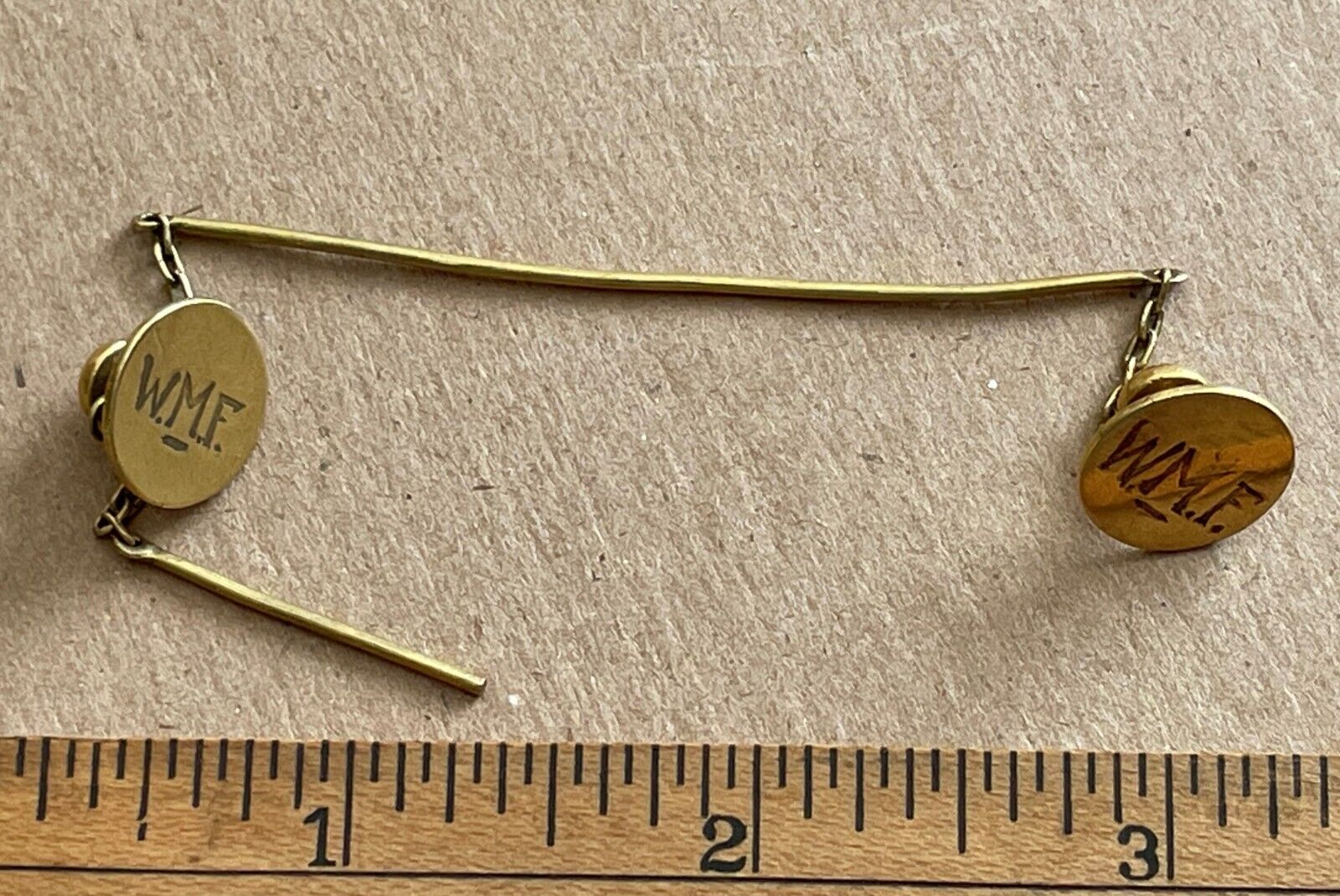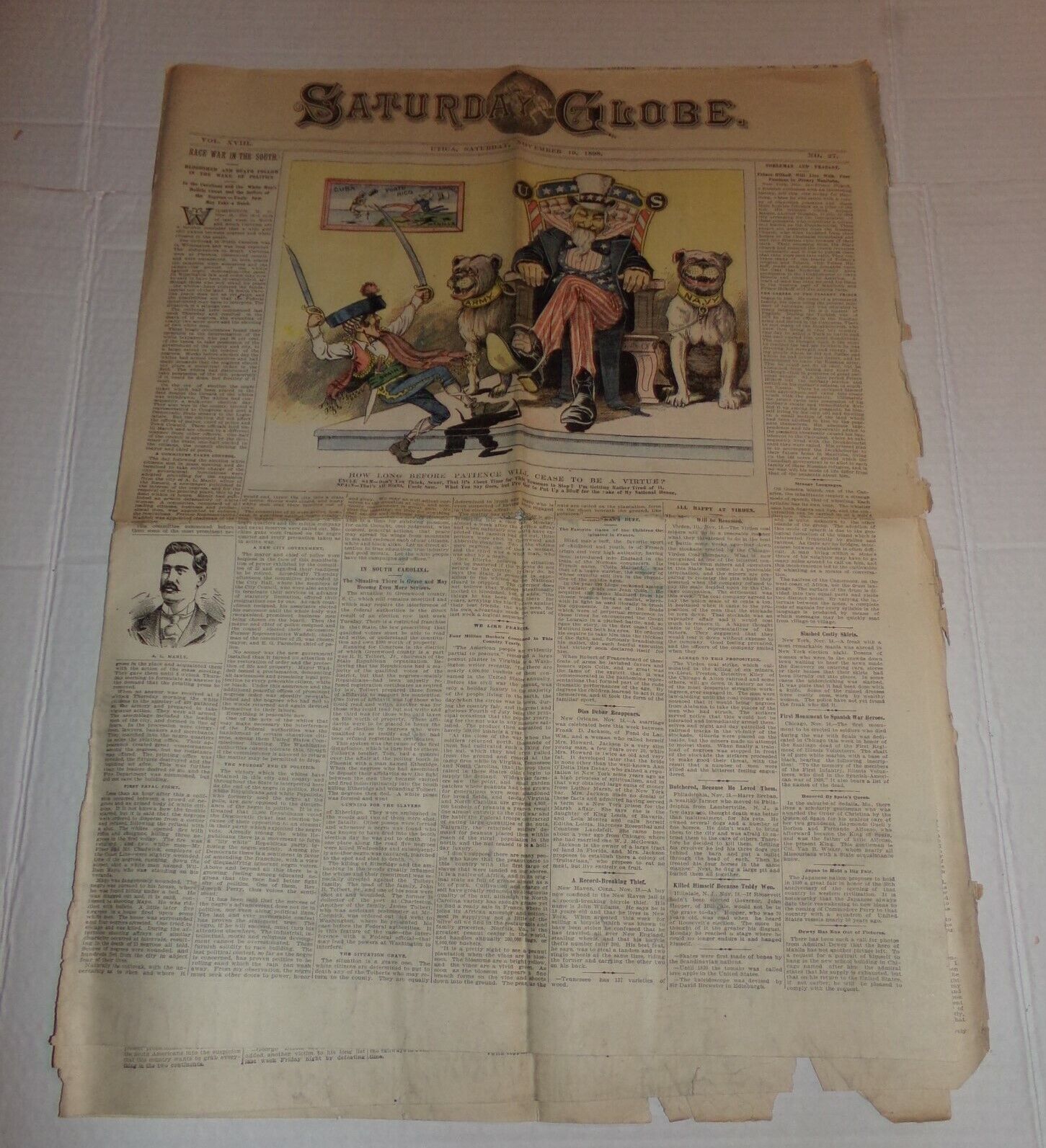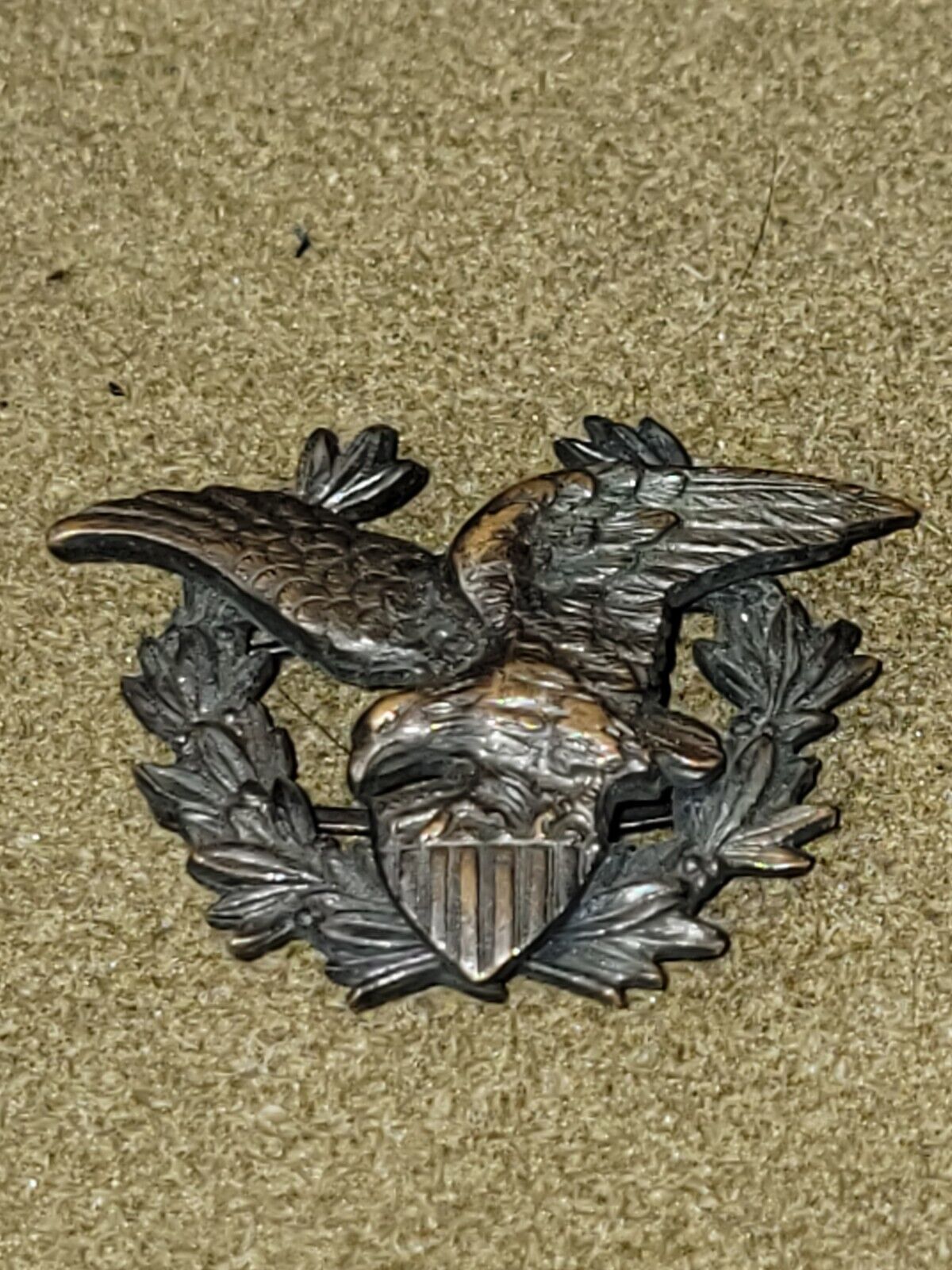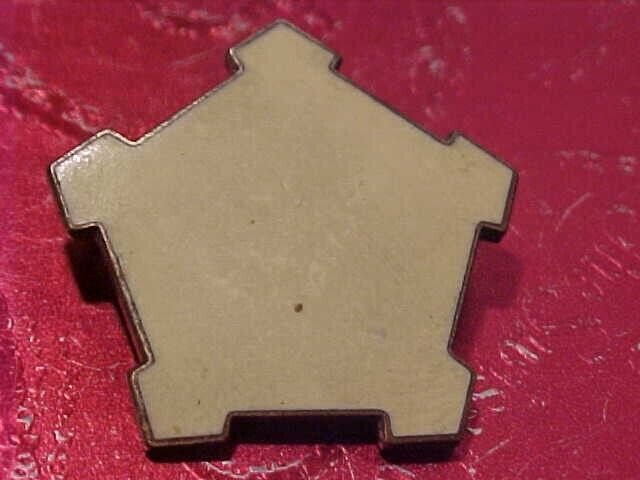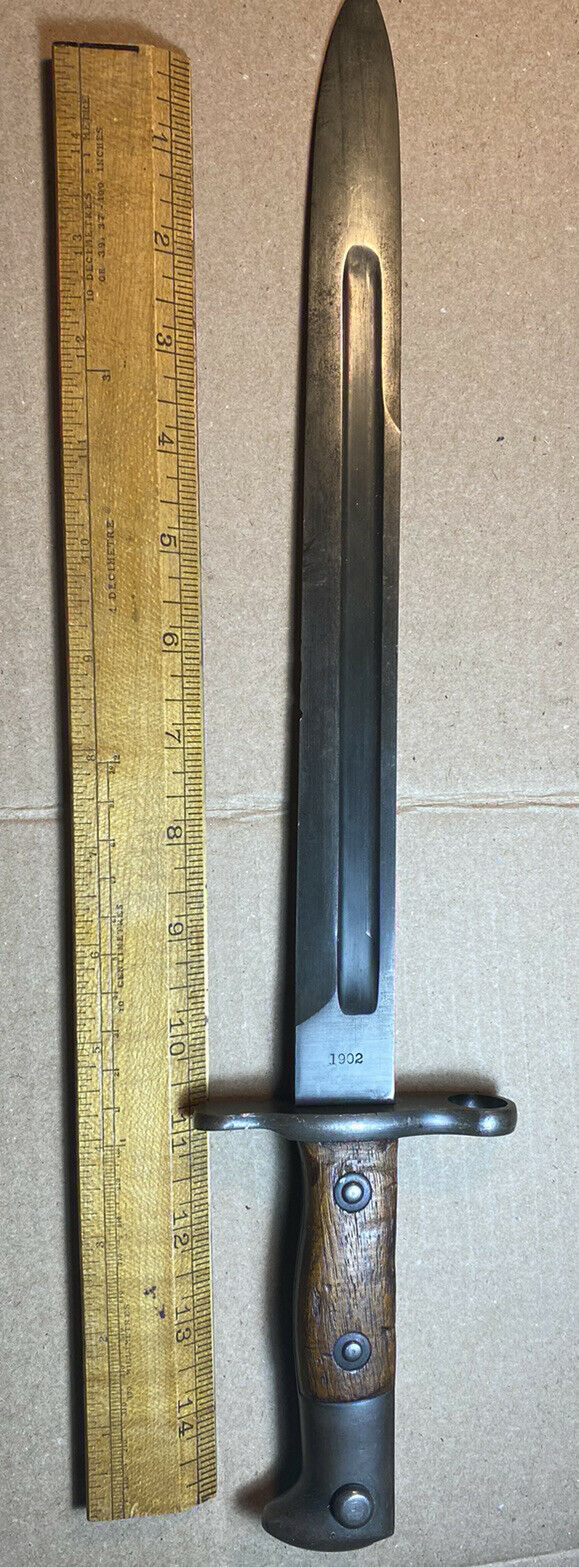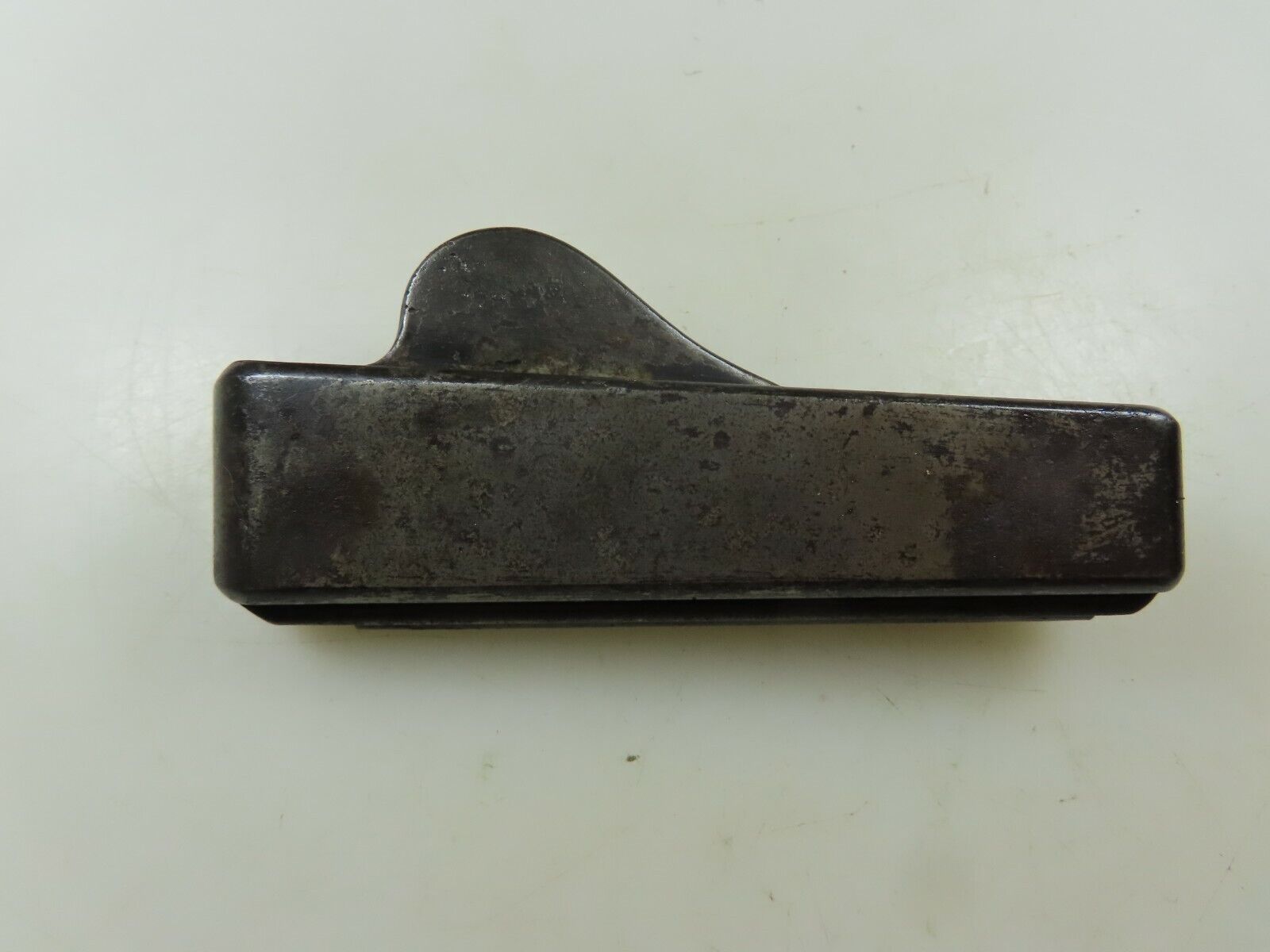-40%
Pre-WWI S.A.W. Enamel CANTEEN (1898 “Dubuque Stmpg. & Enmlg. Co.) Hanger RARE!!
$ 171.6
- Description
- Size Guide
Description
Serious U.S. Canteen collector ALERT!!Before the
M1910 Aluminum Canteen
there was THIS model!
Here is a
n EXTREMELY RARE Spanish American War
and
Philippine Insurrection
era Canteen in structurally sound condition!
This example from the turn of the last century is from a VERY SMALL production run.
It is an EXPERIMENTAL Enameled CANTEEN, circa 1898 (“
DUBUQUE STAMPING & ENAMELING COMPANY"
) and HANGER ("
R.I.A. 1904
" with "Ordnance Bomb" Stamp) in great shape:
NO dents, NO rust, NO play in the spout
.
This dates from that period of the nation's history marked by our brief flirtation with Empire. This model Canteen disappeared almost immediately!! During the First World War, seventeen year later, between ten to eleven million (10,000,000 - 11,000,000) canteens were made. Somewhere between one to two thousand (1,000 - 2,000) of these were made. That means that ONLY ONE of every TEN THOUSAND Canteens made in the opening two decades of the 20thC was an ENAMELED IRON Canteen.
RARE!!! RARE!!! RARE!!!
The
Philippine Insurrection
:
The Philippine–American War, also referred to as the Filipino–American War, the Philippine War, the Philippine Insurrection or the Tagalog Insurgency, was an armed conflict between the First Philippine Republic and the United States that lasted from February 4, 1899 to July 2, 1902, the most likely time frame of this particular Canteen's manufacture.
- ZERO deformation or dents to the body!!! Scattered chips, "shelling" as was the case with any of these canteens that saw even a day's use in the field.
- The Black Enamel
"U.S."
surcharge is still clearly visible.
- The
NECK / SPOUT
is securely welded in place. ZERO wobble.
- The
TRIANGULAR WIRE HANGERS
more freely and have no corrosion.
- The
ENAMEL
is a warm tan 'latte-color' with white specks, and shows no scratches.
- The
WIRE RING COLLAR
that holds the CHAIN moves freely and is solid.
- The
CHAIN
has no bent links.
- The
CORK
(and the Metal hardware
)
of the
STOPPER
are in PERFECT condtion and 'seat' perfectly in the Spout.
This is an
EXCEEDINGLY RARE
Army Canteen, one of THREE styles manufactured by the
DUBUQUE STAMPING & ENAMELING COMPANY
of Dubuque, Iowa between
October 1898 and 1900
, that was purchased for “field trial” by the Army in January 1900. This canteen is described in Mike O'Donnell's exceptional and definitive volume
U.S. ARMY & MILITIA CANTEENS 1775 - 1910
(self published, 2008). What follows of the history of this Canteen is drawn from his research.
Dimensions with
7 1/8" by 1 7/16"
, with a
45 ounce
capacity. The iron was dipped in enamel glaze, coating the interior as well as the exterior, then baked. They were originally delivered covered like the typical Army Canteens covered in layers of wool felt and canvas, which appear (from surviving examples), were often removed.
Even as the
ROCK ISLAND ARSENAL
was turning out 260,000 of the "old pattern" oblate spheroid canteens, little changed from the Civil War, the Dubuque factory in Iowa was
contracted to make 2,000 of these speckled Enameled Iron Canteens
to be issued for field trial. Some were made with a wider spout to accomodate the
Parker Filter.
Only 1,000 of THIS particular variant with the TAPERED NARROW NECK are known to have been manufactured, delivered, and distributed to units in the field!!!
The other two variants differed only slightly:
-- One retained the 3 Strap Loops (instead of the Triangular Wire Loops) and had identical Flattened Sides.
-- One had a 1 1/2” diameter STRAIGHT SPOUT/ NECK to accommodate the patented
Parker Filter
which proved to be a failure owing to problems with its Air Vent.
Concerns arose almost immediately as noted in COL Reade's contemporaneous work, HISTORY OF THE MILITARY CANTEEN, published in 1901:
1. First,
contamination
of the water resulted from
arsenic, lead,
or
antimony
used in the composition of the enamel.
2. Second, there was the danger of swallowing razor-sharp shards of enamel that "shelled off." The
PATTON PAINT COMPANY
warned " the greatest weakness" of all of the enameled canteens was that the enamel "was applied to a substance (iron) which has a much larger coefficiency of expansion. Simply put, the mineral-based enamel used tended to SHRINK under the same conditions that made the iron
EXPAND
, causing pieces of the hard, sharp enamel to chip or "shell off."
What is interesting is how these "lessons learned" in 1901 by the
Quartermaster Corps
were ignored in 1942 when, due to shortages of Aluminum, the idea of Enameled Iron Canteens was once again embraced...and discarded, again, as quickly.
*****
The Tan-Khaki WEB HANGER with the Blackened Brass SNAP HOOK AND HARDWARE from the
Rock Island Arsenal
is in MINT Unissued conditon and clearly marked and dated,
"R.I.A. 1904"
and is marked with the
"Ordnance Bomb."
and is securely hooked to the two TRIANGULAR WIRE HANGERS.
*****
History of ROCK ISLAND ARSENAL:
Rock Island Arsenal
is an active US Army facility located on a 946-acre island in the Mississippi River. In 1969, the arsenal was placed on the N
ational Register of Historic Places
. In 1989, the original arsenal buildings were designated a National Historic Landmark.
Today,
Rock Island Arsenal
is our nation's largest government owned and operated arsenal. The importance of the island was identified as early as 1809, when it was set aside as a federal military reservation by an Act of Congress.
In 1816,
Fort Armstrong
was built as part of a system of forts in the Upper Mississippi Valley. The fort's most important role in keeping the peace was when it served as military headquarters during the
Black Hawk War of 1832
. It was abandoned in 1836, but remained an ordnance depot until 1845. What we see today is the 1916 replica of one of its blockhouses erected for the fort's centennial celebration.
George Davenport originally came to Rock Island as the sutler for
Fort Armstrong
. By 1818, he resigned and established a more lucrative trading post on Rock Island. During the Black Hawk War, he served as the quartermaster for the militia and troops. This earned him the honorary title of Colonel and ,000 in compensation.
In 1833, he built a mansion on Rock Island overlooking the Mississippi. When he lived in the home, the city of Davenport, Iowa, was mapped out and named after him and the first meeting to bring the railroad to the area was held. Members of the "Banditti of the Prairie" murdered him in his home on July 4, 1845.
On April 22, 1856, the
Railroad Bridge Company
completed the first railroad bridge across the Mississippi River. This was a wooden bridge with five spans and a swing span at mid-channel. Fifteen days after it was opened, the steamboat
Effie Afton
struck the bridge. The
Effie Afton
was destroyed, and part of the bridge was burned. This incident led to a famous court case that pitted steamboat interests against railroad interests. Abraham Lincoln, then a Springfield lawyer, defended the railroad. The trial ended in a hung jury. The
US Supreme Court
eventually decided a subsequent suit in December 1862, and the bridge remained operational. The first Government Bridge of 1872 replaced it. Today, a monument marks the location of this bridge.
The
Government Bridge
that we cross today from
Rock Island Arsenal
to Davenport, Iowa, was built in 1896. It is a double-decker bridge with double railroad tracks above and a roadway below. It was built on the same piers as the first
Government Bridge
of 1872. Its swing span that can rotate 360 degrees for river traffic is a unique engineering accomplishment.
An Act of Congress established
Rock Island Arsenal
in 1862. Major Charles P. Kingsbury, the first Commanding Officer of
Rock Island Arsenal
, located and designed three buildings for the arsenal. In 1867, the Clock Tower Building was the only one completed. Today, it is the home of the
U.S. Army Corps of Engineers, Rock Island District
.
Brevet Brigadier General Thomas J. Rodman, the second Commanding Officer of
Rock Island Arsenal
, redesigned the arsenal on a much grander scale. For his contributions from 1865 to 1871, he is known as the "Father of Rock Island Arsenal." From 1871 to 1886, Lieutenant Colonel Daniel W. Flagler oversaw the construction of the arsenal buildings upon Rodman's death.
Rodman designed the ten stone shops at the center of the island. The five buildings in the south row were designated "arsenal row," and were designed for the manufacture and overhaul of general ordnance material. The five buildings in the north row were designated "armory row," and were designed for the manufacture and overhaul of small arms.
Rodman also designed living quarters for himself and his military assistants. Quarters One, an Italianate villa, was completed in 1871. It has 20,000 square feet of floor space divided into more than 50 rooms. It is considered the second largest single-family government residence next to the White House.
The
Rock Island Prison Barracks
existed from December 1863 to July 1865. It was one of 21 prison camps operated by the Union. A total of 12,192 Confederate prisoners were held at the prison camp. The Confederate Cemetery is the only tangible remains of the
Rock Island Prison Barracks
. A total of 1,964 prisoners died. Each grave marker identifies the individual soldier, his company, and his unit.
The
Rock Island National Cemetery
is one of 117 national cemeteries operated by the
Veterans Administration
throughout the United States. Originally established in 1863 as the post cemetery for Union prison guards at the
Rock Island Prison Barracks
, this cemetery is among the 20 oldest national cemeteries. The cemetery covers 70 acres and has approximately 23,000 to 24,000 grave markers representing 29,000 burials. It is among the 30 largest national cemeteries in terms of number of burials.










